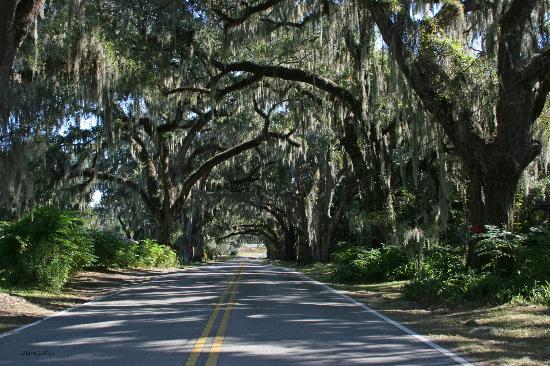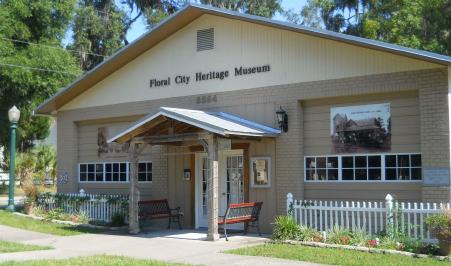Year incorporated
1907-1911
Located in southeastern Citrus County, Floral City's town center is at the
junction of U.S. Highway 41 and State Road 48, about 6 miles south of the county
seat,
Inverness. It was
named "Floral City" because of the abundance of wildflowers in the area. The
town was first surveyed in 1883 by surveyor W.H. Havron and Senator Austin Mann
on land owned by John Paul Formy-Duval and his son-in-law James Baker. Senator
Mann was responsible for getting the legislature to establish Citrus County in
1887.

Jean Paul Formy-Duval purchased the land in the mid 1800's. He built a two-story
home on his land in about 1860 which still stands at the corner of Old Floral
City Road and Orange Avenue in Floral City. He built another home to the
northeast of what is now the town center on land referred to as "Duval Island".
In the late 1800's, Floral City had
well-establish citrus groves, and also produced sugar cane and timber. These
products were shipped by steamboat to northern markets via the Orange State
Canal, dug in 1884. The remains of the canal can be seen from the bridge to
Duval Island. In 1893 the Plant System Railroad was extended through Floral
City, making it easier to ship produce. The current
Withlacoochee State Trail
follows the path of that railroad.
A booming phosphate industry developed in the area by the late 1890's, and the
population exploded to about 10,000 residents - making it one of the largest
towns in Florida at the time. Mine workers were sought from other parts of
Florida, Georgia and South Carolina, and most who came to work were
African-American. During this period, African-Americans composed about 96
percent of the residents, and their contributions to the town and culture are
recognized today by Floral City's inclusion as part of the Black Heritage Trail.
During these boom times, the town fathers incorporated Floral City in 1907. But
it was short-lived and was revoked four years later when the phosphate business
declined and people moved away, leaving the population roughly what it is today.

Since 1993 on the first weekend of December, Floral City celebrates
Floral City
Heritage Days to celebrate the area's rich history. The festival includes a fish
fry, music, horse-drawn wagon rides, living history exhibits on Florida Folk Life Day,
and a Blue Banner Tour of Historic Homes. Orange Avenue from Old Floral City
Road to Annie Terrace is closed to vehicles, and luminaires are placed after
dark along the roadway under the century old oak trees.
If you can't make it to
Floral City Heritage Days, you can still experience the history of the area by
visiting the Floral City Heritage Museum. The museum is only open on Friday and
Saturday. Admission is free. Also be sure to stroll the
Floral City Historic District
- designated as a listing on the National Register of Historic Places.
In March of each year, the town holds its
Floral City Strawberry Festival. The
weekend-long event includes live music, a strawberry prince and princess
pageant, craft vendors, and of course lots of strawberries to eat and purchase.
If the "state fair" ambiance of the big strawberry festival in Plant City isn't
your style, you may prefer the "old Florida" atmosphere of the festival in
Floral City.
Activities & Facilities
Restaurant

Museum or Visitor Center

Playground

Dogs allowed

Short hiking trails

Long hiking trails

Paved bike trails